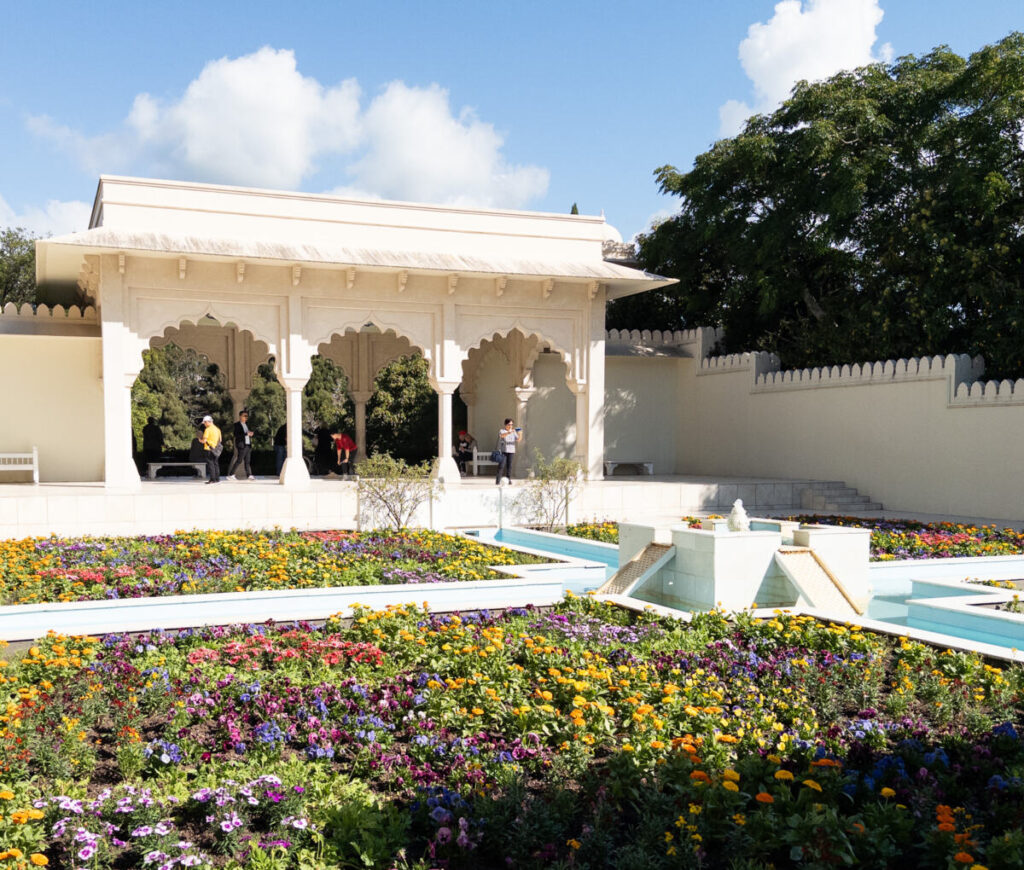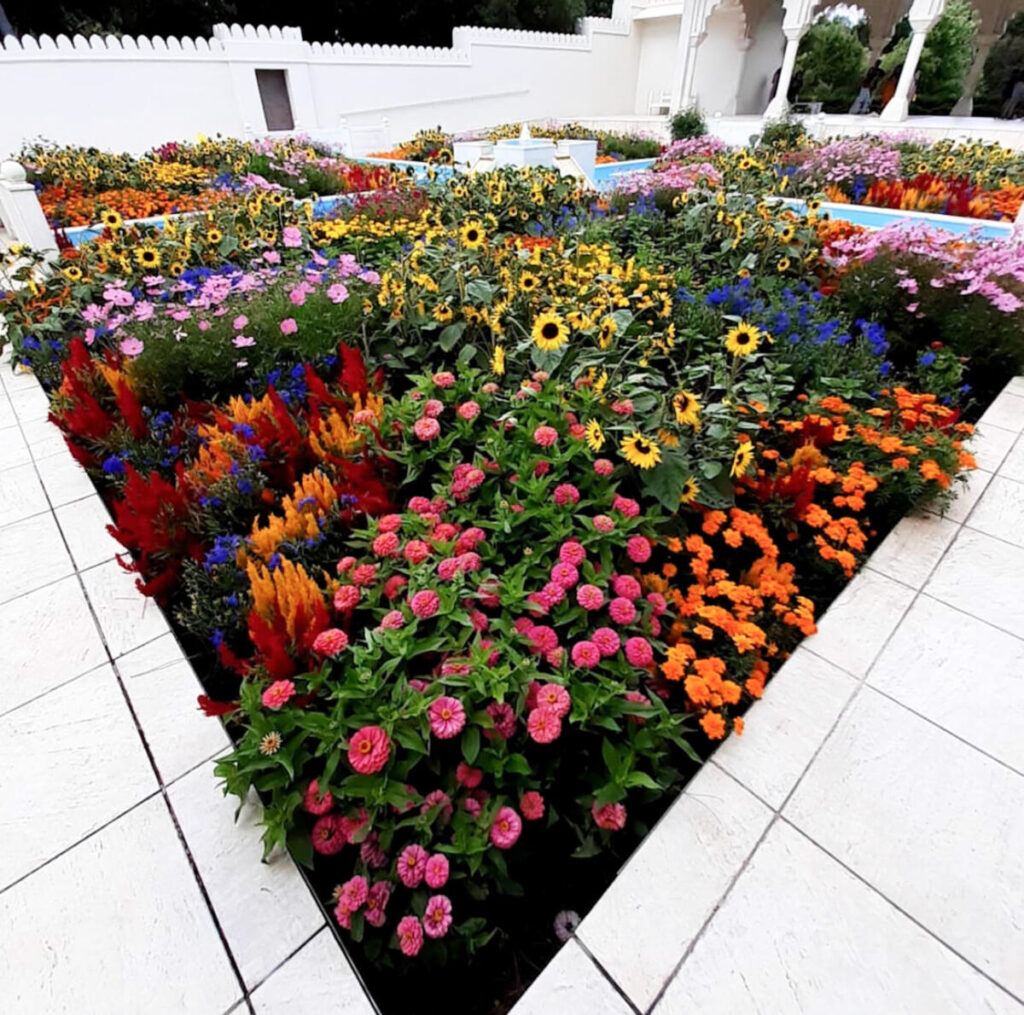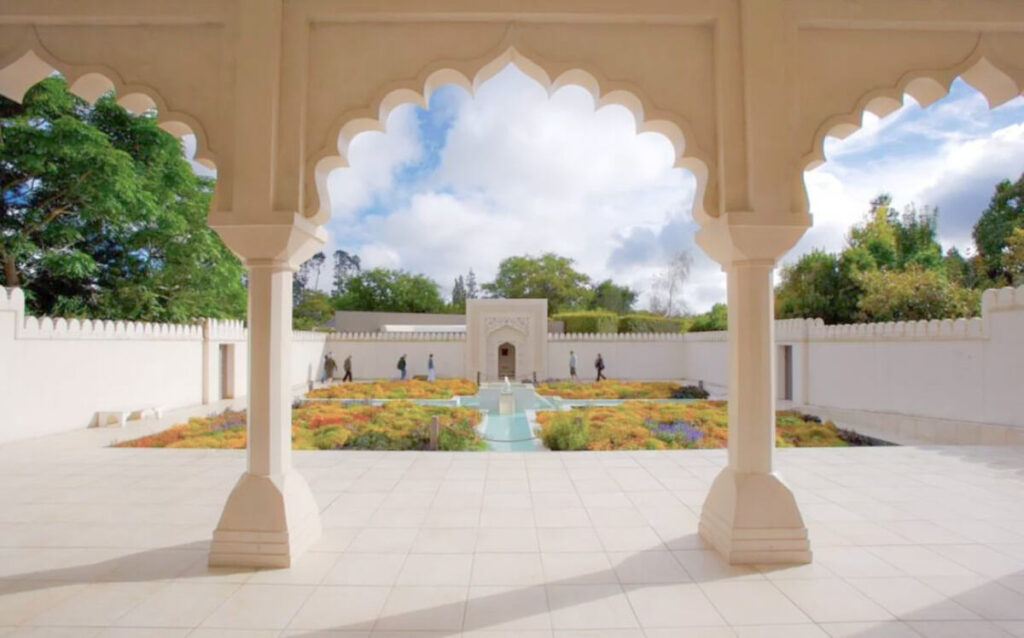The history of Char Bagh Garden
The complex symbolism behind the Char Bagh garden has ancient roots in three of the world’s great religions; Islam, Christianity and Buddhism.
Indian Char Bagh Garden
A Char Bagh walled garden is a style that was known as the first tropical park. It was popular because of its spectacular beauty, its extensive use as a place to relax, and history, as well as for the belief that it represents the cosmos.
It is frequently referred to as the “universal garden” eighth and eighteenth centuries” saw the growth of this kind of beauty across the Muslim kingdom.
At Hamilton Gardens, the website invites visitors to wander through a “Persian carpet of blossoms” that leads to a “magnificent pavilion painted in chalk colors.”

In the Indian Char Bagh Garden t.he beauty of Persian mats consists of flowers and petals in spectrum colours, softly bubbling aquatic elements, the pavilions and seating.
Indian born, Hamilton resident Anki likes to visit Hamiton gardens because there are several smaller gardens, each with different themes. His favourite gardens are the Indian Char Bagh and the Italian Renaissance garden because both garden are big and have several colours of flower and lots of little areas to see. He is really impressed with both gardens, especially the statue figures, more that he originally thought would be there and the fragrance of flowers in the air of both gardens.

In the Mughal kingdom in the 1600’s , a Char Bagh Garden was a valuable source of creative ideas, in addition to having a big impact on the spiritual and social existence of the people.
It represents an amplifier of motivation for artistic endeavours and the construction of Mughals, as well as their devotion to natural beauty, a haven of peace and tranquillity.

The garden of Char Bagh serves as a visual presentation of the rainbow spectrum, highlighting an overall feeling of historical brightness and dynamic in the environment because of the presence of exotic flowers and plants that were brought by Mughal rulers. Since Mughals were enthusiastic about the cultivation of plants, which enhanced the elegance of the empire and helped to brighten the surroundings both inside and overseas. In the garden area, different types of trees and bushes are usually arranged in a pattern that forms a zigzag and appears as “units.” https://hamiltongardens.co.nz/news/5-reasons-to-visit-our-indian-char-bagh-garden-in-october/
A wide variety of flowers, such as jasmine, sunflower, lilies, roses, and more, have been improving the aesthetics, infusing the space with optimism, and revitalizing it. Many tree species, such as willows and cypresses, have been seen at Char Bagh and create a nice atmosphere. Additionally, the use of variety of trees gives shelter and echoes the atmosphere of heaven, which is the core value of “Persian and Islamic religions.” https://timesofindia.indiatimes.com/travel/destinations/follow-a-persian-carpet-of-flowers-to-hamiltons-indian-char-bagh-garden/articleshow/45476841.cms




